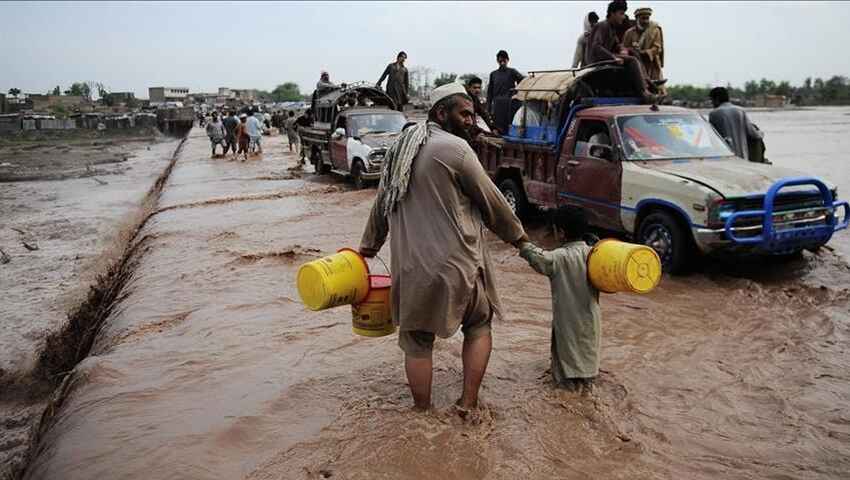
According to the UN definition “climate change refers to long-term shifts in temperatures and weather patterns [that] may be natural. […] But since the 1800s, human activities have been the main driver of climate change, primarily due to burning fossil fuels like coal, oil and gas.” Climate change has led to a progressive increase of Earth’s temperatures and, above all, to a much wider series of consequences, that includes, “among others, intense droughts, water scarcity, severe fires, rising sea levels, flooding, melting polar ice, catastrophic storms and declining biodiversity.”
People are now drastically affected by these phenomena, especially those who live in the most vulnerable places of the world, so much so that most of them are “at risk of famine” or need to relocate. As a matter of fact, according to the United Nations “in the future, the number of ‘climate refugees’ is expected to rise.”
Studies conducted all over the world, proved this tight link between climate change and permanent migration and as climate conditions continue to deteriorate, the “climate migration” is likely to increase.
Nevertheless, countries and institutions are still reluctant in recognizing rights to this category of migrants, and there is still no legal protection for people who are forced to migrate due to natural disaster, or to drastic consequences of climate change.
The paradox is that most of the fault for climate change is on western countries that are facing incoming migration and complaining of lack of possibility to receive migrants. While the most vulnerable countries that are currently facing the most critical consequences are the ones owning less responsibility in climate change, from where huge amount of people are currently internally displaced or forced to migrate abroad.
International Law, in fact, recognize legal protection to people who, according to the 1951 Convention Relating to the Status of Refugees and the 1967 Protocol relating to the Status of Refugees, are identified as refugee, therefore a person who “[o]wing to a well-founded fear of being persecuted for reasons of race, religion, nationality, membership of a particular social group or political opinion, is outside the country of his nationality and is unable, or owing to such fear, is unwilling to avail himself of the protection of that country, or who, not having a nationality and being outside the country of his former habitual residence as a result of such events, is unable or, owing to such fear, is unwilling to return to it.”
Hence, there is a clear gap in international law regarding protection to “climate migrants”, but also regarding internal displaced people.
Nevertheless, although there is not a real asylum protection to climate migrants, “UNHCR published legal guidance in October 2020 that opens the door for offering protection to people displaced by the effects of global warming.”
It is, however, undeniable that there is still so much to do in this perspective as long as climate change continue to fuel huge amount of people around the world. And for sure, western countries, and Union Europe itself, should deal with this issue in the long run, probably by redefining the requirements for asylum protection, or at least redefining the criminalization of the so called “economic migrants” who emigrate for different reasons and who are not identified as refugees and therefore who are not entitled to ask for protection.
In conclusion, migration is a complex social issue concerning human rights matters which need to be valorised and recognised, and climate change is undermining those human rights, especially in the most vulnerable countries that are currently facing the most severe consequences.
Bibliography
Mile, A. 2021. Protecting Climate Migrants: A Gap in International Asylum Law. Available at: https://earthrefuge.org/protecting-climate-migrants-a-gap-in-international-asylum-law/
The United Nations. What is Climate Change? Available at: https://www.un.org/en/climatechange/what-is-climate-change
Tidey, A. 2020. Germany says it will not grant asylum to ‘climate refugees’ Available at: https://www.euronews.com/my-europe/2020/02/13/germany-says-it-will-not-grant-asylum-to-climate-refugees
Watson, J. 2022. Climate change is already fueling global migration. The world isn’t ready to meet people’s changing needs, experts say. PBS News Hour. Available at: https://www.pbs.org/newshour/world/climate-change-is-already-fueling-global-migration-the-world-isnt-ready-to-meet-peoples-needs-experts-say
Wodon, Q., Liverani A., Joseph G., Bougnoux N. 2014. Climate Change and Migration: Evidence from the Middle East and North Africa. World Bank Study. The World Bank.
By The European Institute for International Law and International Relations.















